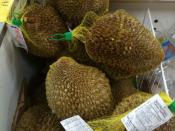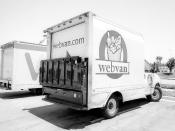In response to your request for a thorough analysis of Peapod and the context in which it operates, a situation analysis has been performed and the results are detailed in the ensuing remarks.
Chief Economic ad Business Characteristics Market Size: In 1999 online grocery sales amounted to about $235 million, less than 0.25% of total supermarket industry sales.
ÃÂ÷ Forrester Research forecast online grocery sales to reach $3 billion by 2003 and possibly $85 billion by 2007.
ÃÂ÷ CDC forecast that online consumer-direct grocery sales would account for between 8 and 12 percent of the total grocery market share by 2010.
Market Growth Rate: Online grocery sales expected to grow at a rapid pace as: ÃÂ÷ companies improve their service and selection, ÃÂ÷ PC penetration of households rises, and ÃÂ÷ consumers become more accustomed to making purchases online.
Position in the life cycle: Infancy.
Number of Rivals: 45 companies but only Peapod, HomeGrocer.com
and Webvan appear to dominate.
Profitability: No company has yet to be profitable due to high start-up and operating costs and small sales volumes.
Customer Characteristics: Consumers are extremely price-sensitive when it comes to buying groceries.
Five-forces model of the online grocery business Rivalry Among the Online Grocers "" A weak to moderate competitive force ÃÂ÷ Rivalry, at present, exists only in those locations where there's more than one online grocer. There are only a few such locations: The San Francisco/San Jose area (Peapod and Webvan), Dallas (Peapod and Albertson's), and perhaps a few others. To some extent, rivalry is a positive factor because of the extra attention that it draws to help make more people aware of the online grocery shopping option. This is an emerging and relatively unknown industry. In a very real way, the more companies there are in the industry and the more...


